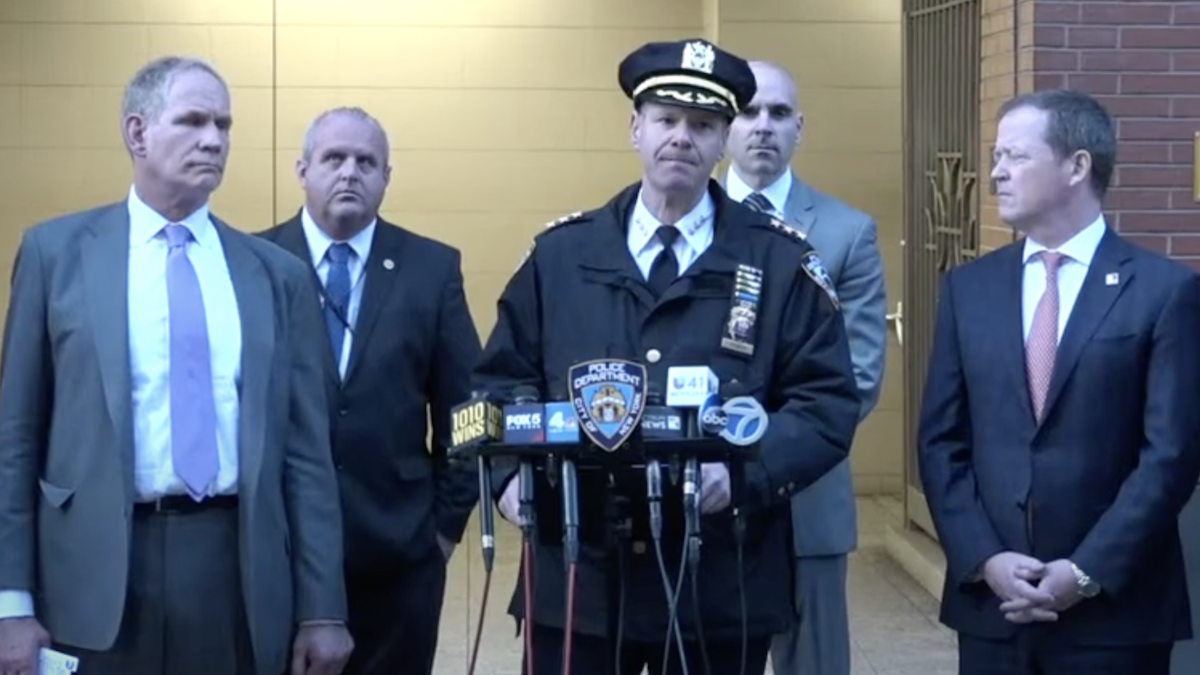
What’s really going on with the federal Sentencing Reform and Corrections Act? This bipartisan legislation has been in the news lately, prompting a strange and confusing exchange between conservatives who support justice reform (notably Vikrant Reddy and myself) and critics of the movement (Sean Kennedy and Jeffrey Anderson).
These articles kicked up a sizable cloud of dust without communicating much about the legislation’s content and goals. It’s time to explain more clearly: what does this legislation actually accomplish, and why is it suddenly generating controversy?
Politics Versus Policy
The Federal Sentencing Act is not perfect. No legislation is. But it represents a good-faith, bipartisan effort to improve our prisons and courts, making the former more efficient and the latter more fair. It is broadly in line with state-level reforms that have already yielded considerable success. The proposed measures are also modest, making it exceedingly unlikely this law will precipitate a crime wave. It is a well-conceived and responsible piece of legislation.
Unfortunately, it’s also the kind of legislation that can easily fall prey to political maneuvering. It’s complicated and technical, and adjusts scores of statutes. Unless you have an intimate familiarity with the federal penal system, it’s hard to assess what’s really changing. Many voters still find it funny that conservatives are working to reform our justice system, and in a Jacksonian-spirited election year, the temptation to resurrect tough-on-crime memes was predictably strong.
Donald Trump has been comparatively quiet thus far on the crime issue. That may reflect the fact that some of his likely vice presidential candidates (most notably Newt Gingrich and Nathan Deal) have already established themselves in the pro-reform camp. Nevertheless, this initiative could still fall prey to the dreary realities of partisan base-beating. That would be sad to see, especially since justice reform is almost the only bipartisan issue we’ve got left in these bitter times.
Of course, for some that is itself a strong motive to kill the bill. They hardly even pretend to know or care about the content of the legislation itself. Consider Jeffrey H. Anderson’s “What, are we the sort of people who work with Democrats?” rebuttal to my last essay for an example of this thinking.
What Does S.B. 2123 Actually Do?
If passed into law, this bill would modestly reduce the number of people serving lengthy sentences for drug-related crimes. It’s a pressing issue at the federal level because federal prisons (though they account for only a fraction of our nation’s total inmate population) have very disproportionate numbers of drug-related criminals. Murderers, rapists, and burglars are mainly found in state prisons. By contrast, about half of federal prisoners are drug offenders. Think of this as the Richard Nixon legacy.
The past two decades have seen ramped-up sentences for drug criminals, which have cost us billions in taxpayer money, while yielding few benefits. Between 1988 and 2012, federal sentences more than doubled in length, at the cost of more than $2 billion a year. If there was an upside for public safety, it’s not clearly visible in the data. Longer prison terms don’t notably deter crime, which is unsurprising given that criminals don’t tend to be long-term planners. Recidivism remains high regardless of sentence length, up until the point when inmates start to “age out” of the cohort of likely criminals. In other words, 65-year-olds don’t commit many felonies, but a 25-year-old is no less likely to re-offend because we incarcerated him for four years instead of two.
The moral of the story is that prisons are beneficial primarily insofar as they keep dangerous people off the streets. That’s a huge benefit with respect to murderous psychopaths. Yet if we’re talking about minor, subsidiary figures in the drug trade, we should recognize they are easily replaced. Hitting small-time distributors or smugglers with decades-long sentences will not solve our drug problem.
Even recognizing those principles, it’s always best to be cautious about public safety. The Sentencing and Corrections Act is cautious. We certainly won’t be seeing the immediate release of thousands of drug criminals. Rather, the bill takes modest steps to soften some of the more drastic measures in federal drug laws. Sean Kennedy’s recent missive cautioned against “rushing” conservative justice reform, but looking at the bill currently in front of us, I’m truly at a loss to imagine what might satisfy him if this does not.
Why This Is Prudent Reform
Let’s consider some examples. Under current law, a person convicted of his second high-level drug crime triggers a mandatory 20-year prison sentence, while the third triggers a life sentence. Under S.B. 2123, those would be reduced to minimum 15- or 25-year sentences, respectively.
Note that “high-level” drug crimes are often distinguished by bulk. If a kid is caught with a kilogram of heroin that he plans to sell at his high school, he could be charged with a “major” drug crime even if the blend is actually 80 percent powdered sugar. Drug mules are another example of “major drug offenders” who in some cases may be less than fully aware of what they’re doing when they commit their crimes.
It’s true that major drug offenders are generally involved in the drug trade in some way; they aren’t just run-of-the-mill college potheads. On the other hand, it’s hard to think of reasons why a 25-year sentence would be insufficient for a nonviolent drug criminal. How many people, after spending half their lives in prison, will get out at 50 and start looking for an on-ramp back into the drug trade?
Another provision of S.B. 2123 expands slightly the “safety valve” that allows federal judges a bit more discretion in deciding whether mandatory minimum sentences can appropriately be applied. Basically, a safety valve is designed to bring human judgment into the courtroom, allowing judges to decree that mandatory minimums are, in particular cases, very unnecessarily harsh. Kennedy makes much of this in a recent piece at National Review, implying that bleeding-heart liberal judges are hungry for opportunities to release dangerous criminals with a slap on the wrist. The Sentencing and Corrections Act is just the excuse they need to put drug lords and kingpins back on the street with minimal accountability.
Even if we accept that federal judges are as tender-hearted and feckless as Kennedy claims, we should recognize that S.B. 2123 is carefully constructed to prevent that kind of abuse. The safety valve can only be applied to a narrow range of cases involving mostly clean offenders. If you already have a lengthy rap sheet (specifically, four or more criminal history points), no bleeding-heart judge can help you, because you won’t qualify. If you’ve ever been convicted of a violent felony, you won’t qualify. If you were a leading or organizing member of a criminal gang, or if you refused to cooperate with authorities after your arrest, or if anyone died or was seriously injured in the commission of your crime, you won’t qualify.
Do these sound like drastic measures? More complete summaries of the bill’s provisions can be found here, here, and here, but in broad form, S.B. 2123 is a solid example of responsible, prudent reform. It makes modest adjustments to multiple statutes, working towards a reduction of the number of nonviolent people serving punishing sentences for drug crimes. That in turn reflects a sound, research-supported consensus that draconian drug sentences aren’t doing much good, and that the relevant resources can be better used elsewhere.
What’s Your Plan, Reform Critics?
If you’re unsure whom to trust in the justice-reform debate, consider this. Reform-minded conservatives have ideas, an agenda, and recent legislative accomplishments to their names. They’ve been elbow-deep in the relevant policy issues for many years now. By contrast, their critics can’t even seem to agree on the most fundamental point: is over-incarceration is actually a problem in America?
In many ways it’s unsurprising that this would be a fuzzy point for critics. Mass incarceration was the rock against which tough-on-crime finally foundered. For decades, conservatives called for tough, consistent sanctions as a response to rising crime and disorder. This approach did yield some benefits: crime fell through the ’80s and ’90s.
As prison populations exploded, however, the price tag likewise grew steeper, and the social effects of imprisoning about 1 percent of our population became ever harder to ignore. Crowded prisons are bad for any number of reasons. They’re miserable and unsafe (for guards as well as inmates), and they do a poor job of rehabilitating offenders.
Eventually, it became clear to policy-savvy conservatives that they needed a more multifaceted approach to crime control. Red states have been leading the way for years now in using data-driven methods to reduce incarceration without sacrificing public safety. Many of the same people and organizations have helped to craft and promote federal sentencing reform, eventually giving rise to the Sentencing Reform and Corrections Act.
As policy, it’s been an impressive effort. Politically, it requires a paradigm shift that some haven’t yet made. As the data pile up indicating that prudent reform is possible, William Otis has gone on defending large-scale incarceration, regularly repeating his maxim that a criminal justice system is judged not by its incarceration rate, but by its crime rate. That no-limit position is too drastic for most, so we see figures like Kennedy and Anderson taking softer but more confusing stances, vacillating between tough-on-crime rhetoric and vague complaints that the legislation in front of us is too quick, too drastic or too bipartisan.
Kennedy warns us, in the spirit of Otis’ critique, that the real problem with our society is the number of criminals, not the number of inmates. Then he goes on to imply that state-level justice reform has been healthy but that the federal bill somehow goes too far. (How? Why? What provisions would he change?)
Anderson implies that federal sentencing reform represents an irresponsible lapse of conservative principles, but then later concedes that some reform may be good, on the condition that we scrap the present bill and replace it with exclusively Republican-authored legislation. (Why would we do that when reform-interested conservatives have been involved in writing and promoting this bill?)
It’s hard to have a serious debate when critics are bringing so little to the table. Through promoting successful state-level reforms, conservative justice reformers have demonstrated that they are prudent, cautious, and highly attentive to data. Unless critics can offer something more substantive than dated political platitudes, we should trust that this statute is moving us a step in the right direction.
Correction: An earlier version of this misquoted Otis’s maxim as applying to nations rather than criminal justice systems.









